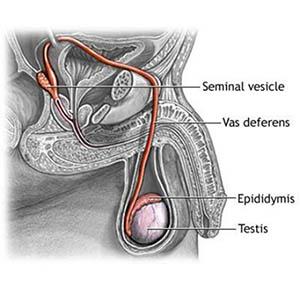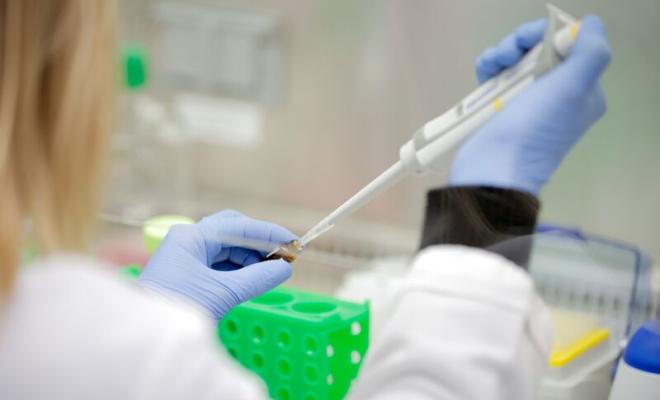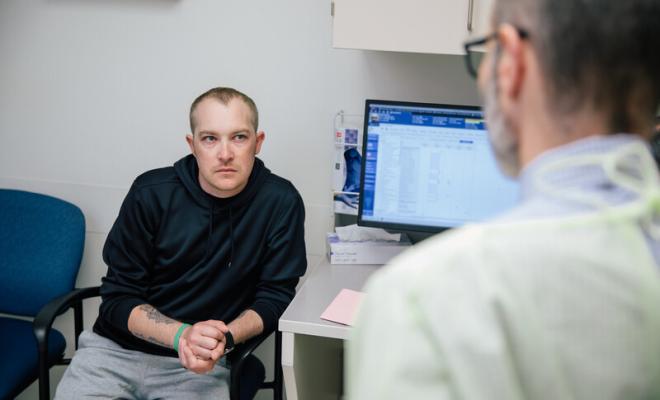The Biology of Male Reproduction and CF
To understand infertility in men with cystic fibrosis, it is helpful to first understand the biology of the male reproductive system. It has three main parts: the testicles (also called testes), the epididymis, and the vas deferens (see Figure 1).
Sperm (the reproductive cells) are developed in the testicles. The epididymis is a series of tubes that sit behind the testicles. Sperm are stored in these tubes until ejaculation. The vas deferens is a long tube that carries mature sperm through the penis during ejaculation (see Figure 2). The vas deferens is also called the sperm canal.
Most men with CF (97–98%) are infertile because they do not have a sperm canal. This is called congenital bilateral absence of the vas deferens (CBAVD).
Men with CF do produce semen, the fluid that comes out of the penis during orgasm (ejaculation). And sperm production in the testicles is normal in 90% of men with CF and CBAVD. But the sperm never make it into the semen.
This makes it impossible for the sperm to reach and fertilize an egg through sexual intercourse. The absence of sperm in the semen can also contribute to men with CF having thinner semen and lower amounts of semen.
“My path started with finding a urologist who was familiar with CF, in-vitro fertilization (IVF), and could work with the fertility clinic we had chosen. Thankfully, our clinic had a list of doctors that they worked with in the past who were local. My initial consultation with the urologist went well and after the results of my semen analysis came back, he explained to me that I ... would need to have a surgical procedure to extract sperm for IVF.” — Justin Goldsmith, adult with CF, from the CF Community Blog
Can Men With CF Have Children?
First, remember that a small number of men with CF have a sperm canal and can conceive a pregnancy without help. You can ask your doctor to refer you to a urologist, a male reproductive expert who can use medical tests to confirm whether you have a sperm canal.
If you are missing the sperm canal, there are still ways to have biological children. Men with CF who are infertile can consider assisted reproductive technology (ART). Typically this technology involves a procedure to remove sperm from the testicles and then a process called in vitro fertilization (IVF).
What Causes CBAVD?
Although the cause of CBAVD is not fully known, it is thought to be associated with cystic fibrosis transmembrane conductance regulator (CFTR) mutations. These mutations also cause problems in the pancreas and lungs.
What if I Have CBAVD but Don't Have CF?
Since CBAVD is believed to be caused by similar genetic patterns found in CF, it is incredibly important for men who have been diagnosed with CBAVD to also get tested for CF. Because CBAVD often has no external signs or symptoms and still allows men to have a fulfilling sex life, some men may not find out that they have CF or CBAVD until they have trouble conceiving a child.
Using Birth Control
Even though most men with CF are infertile, some do still have sperm present in their ejaculate. If your infertility has not been confirmed by medical tests and you do not want to have a baby, you should use birth control to prevent pregnancy. Men with CF are also at risk for sexually transmitted infections if condoms are not used during sex.
Male Yeast Infections
Another condition that men with CF may experience, although it is rare, is a yeast infection. This is also called male candidiasis. Symptoms may include sores on the penis, irritation, and itching. Talk with your doctor if you have any of these symptoms. Yeast infections can be treated with antifungal medication.




